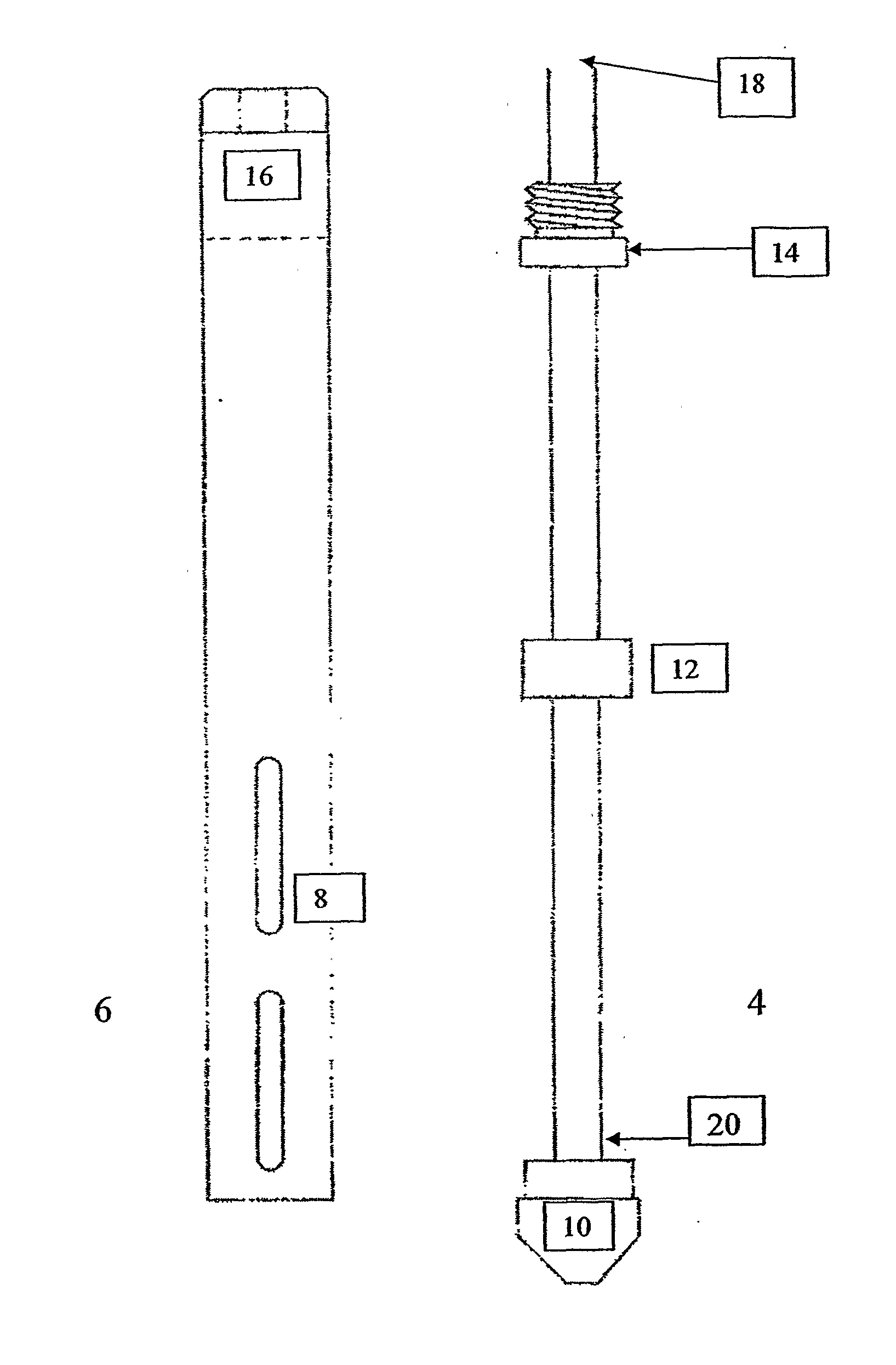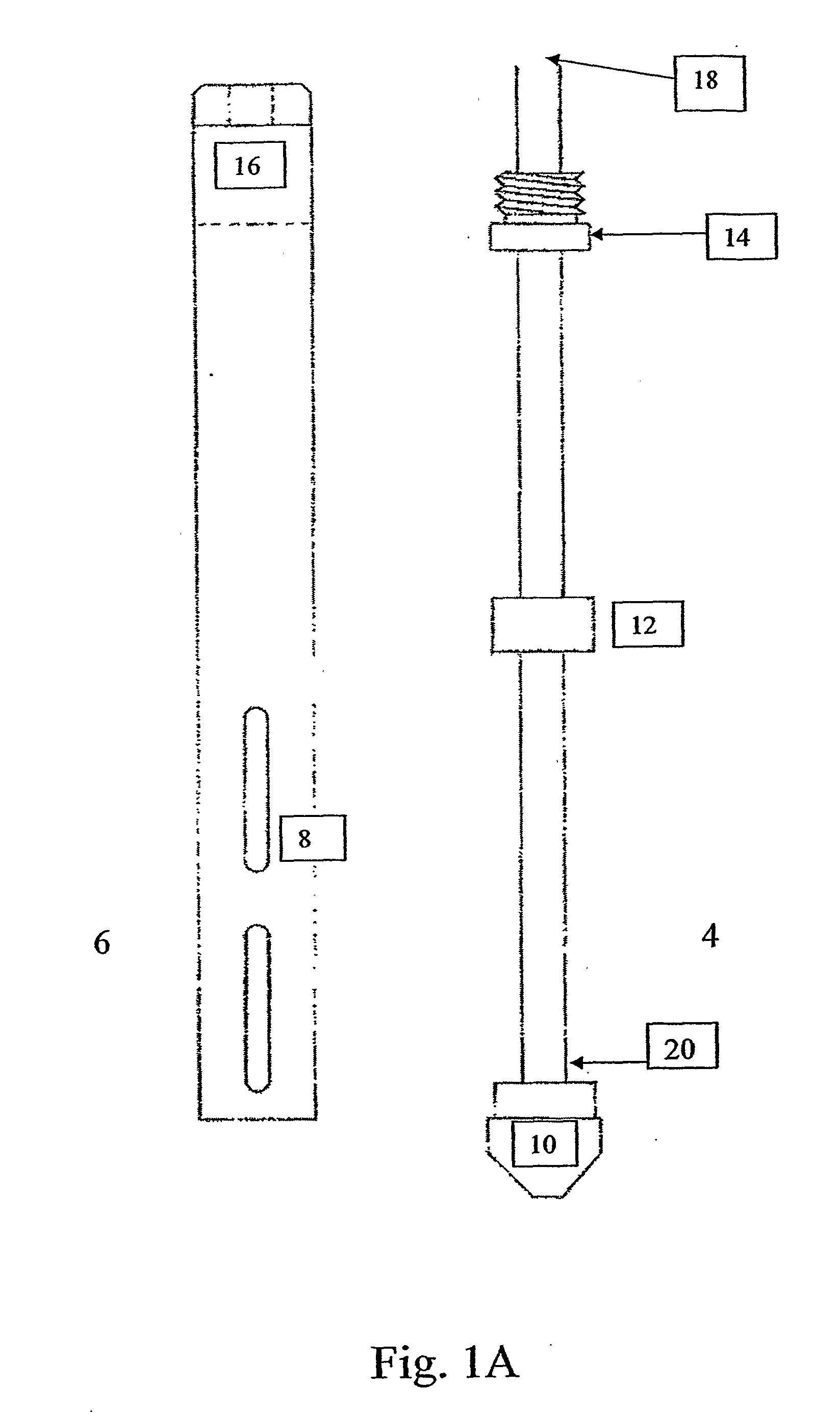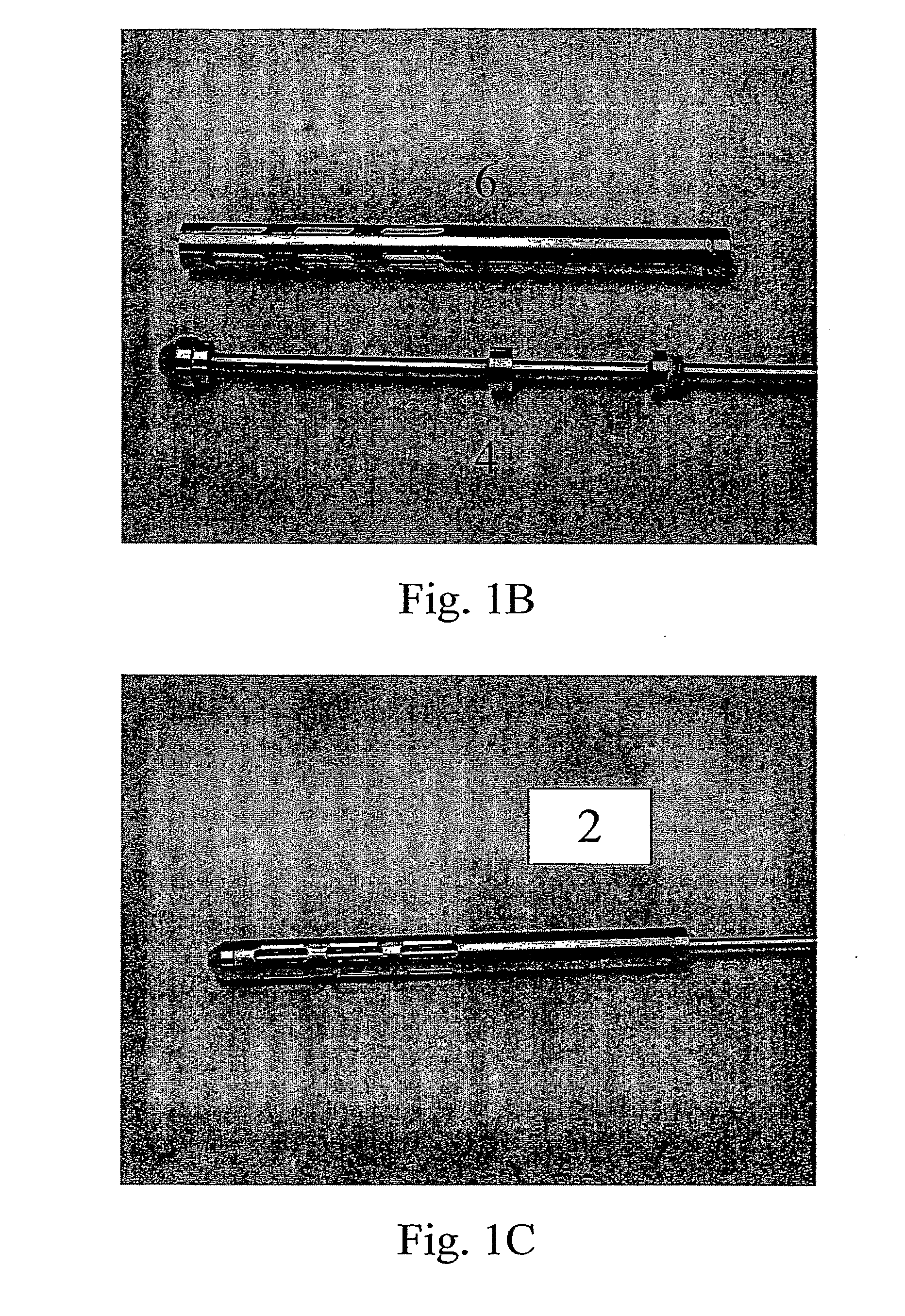Food Sample Collector
a technology for collecting food samples and food, which is applied in the field of improving the efficiency of pathogen detection, can solve the problems of inability to completely produce a product, inability to fully utilize the product, and inability to meet the requirements of the product, so as to reduce sampling costs, reduce time, material and product loss, and increase the power of detection
- Summary
- Abstract
- Description
- Claims
- Application Information
AI Technical Summary
Benefits of technology
Problems solved by technology
Method used
Image
Examples
example 1
Novel Sampling Procedure Using the Inventive Sampling Device
[0031]In a further aspect, the invention provides a novel sampling procedure, comprising the following steps:
[0032]In step 1, placing the shaving tube 6 onto the primary shaft 4.
[0033]In step 2, locking the shaving tube 6 into place on the shaft's threaded-housing member 16, using, for example, counter-clockwise threads (reverse threaded with respect to the direction of rotation).
[0034]In step 3, the shaft-end of the device 18 is locked into the end of a drill tool.
[0035]In step 4, the drill tool is powered on and the sampling device 2 turns, for example, in a clockwise direction at the selected speed allowing the user to take samples from any food surface.
[0036]In step 5, the shaving tube 6 is unlocked from the primary shaft 4 (e.g., by turning the tube counter-clockwise.
[0037]In step 6, the shaving tube 6 is drawn back passed the stationary piston 12, allowing the sample to be expelled on the exposed portion of the shaft ...
example 2
Operating Characteristics Evaluation
[0039]As stated herein above, sampling plans for meat products follow two-class attribute plans based on testing for the presence (positive result) or absence (negative result) of an organism. Following conventions set forth by the International Commission on Microbiological Specifications for Foods (ICMSF; 2002. Microorganisms in Foods, Kluwer Academic / Plenum Publishers), for two-class attribute plans the probability of acceptance (Pa) for a lot is a function of three factors. The first is the actual incident rate (IR) of E. coli O157:H7 in the lot at the sampling point. The second is “n”, representing the number of sample units collected for the lot. The third is “c”, representing the maximum allowable number of sample units yielding unsatisfactory results for the lot.
[0040]Following ICMSF conventions, comparative values of Pa were computed using an operating characteristic function, and depicted as an operating characteristic (OC) curve. OC cur...
example 3
Additional Embodiment
[0043]FIG. 4A shows an additional exemplary embodiment of an inventive sampling device. In this embodiment the sampling device comprises a primary shaft member (e.g., cylindrical stainless steel) terminating in a shaving member (e.g., cylindrical tube). The primary shaft member and the shaving member (e.g., cylindrical shaving tub) may be a single unit formed of a unitary material, may be comprised of two units (e.g., a primary shaft, and a shaving member) permanently jointed (e.g., welded together), or may be removably joined (e.g., by means of threads and thread receiving means). Preferably, the sampling device is a unitary member, or is comprised of a primary shaft member and a shaving member permanently joined (e.g., by welding) to minimize potential contamination areas.
[0044]The shaving member (e.g., cylindrical tube) in this example comprises one or more longitudinal (relative to the shaft member) open channels or cavities (e.g., shown as longitudinal flut...
PUM
| Property | Measurement | Unit |
|---|---|---|
| diameter | aaaaa | aaaaa |
| diameter | aaaaa | aaaaa |
| surface sampling | aaaaa | aaaaa |
Abstract
Description
Claims
Application Information
 Login to View More
Login to View More - R&D
- Intellectual Property
- Life Sciences
- Materials
- Tech Scout
- Unparalleled Data Quality
- Higher Quality Content
- 60% Fewer Hallucinations
Browse by: Latest US Patents, China's latest patents, Technical Efficacy Thesaurus, Application Domain, Technology Topic, Popular Technical Reports.
© 2025 PatSnap. All rights reserved.Legal|Privacy policy|Modern Slavery Act Transparency Statement|Sitemap|About US| Contact US: help@patsnap.com



